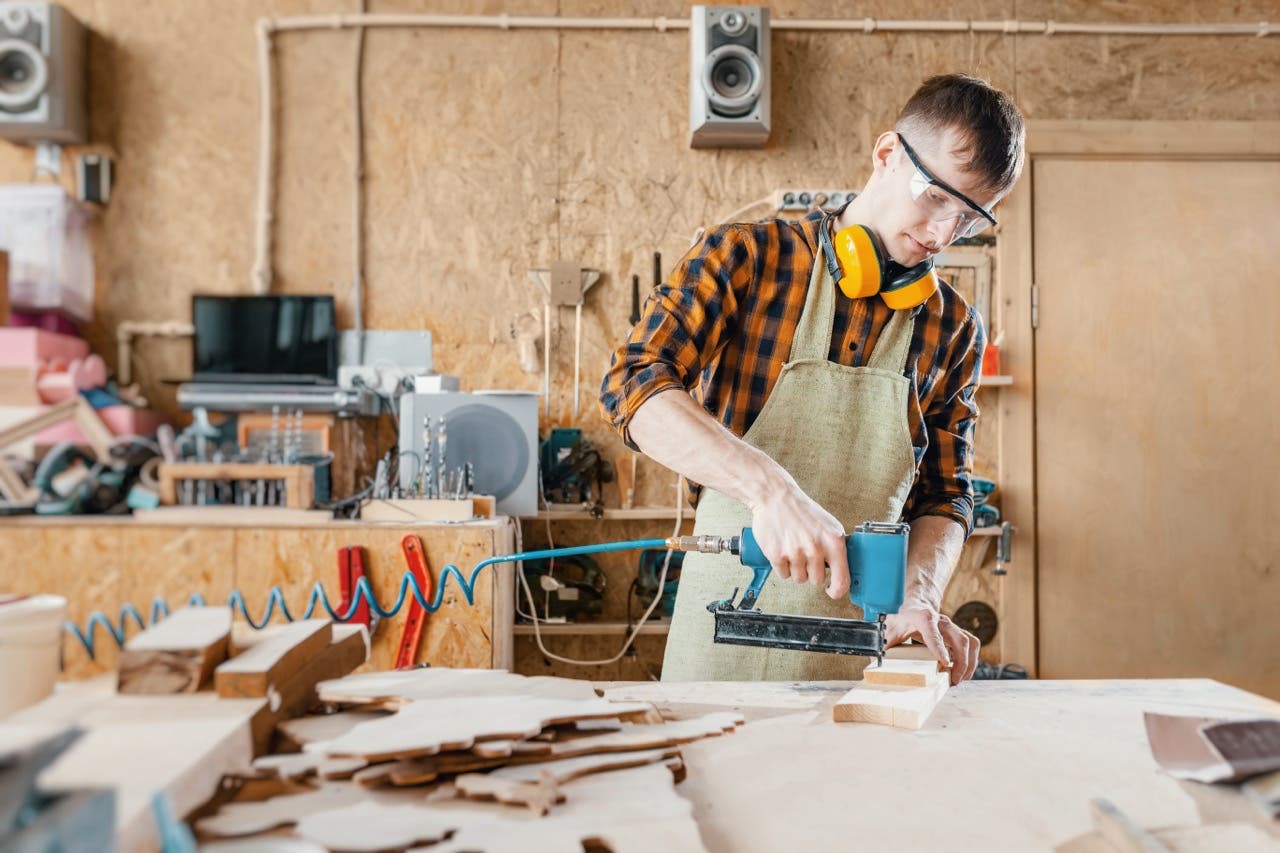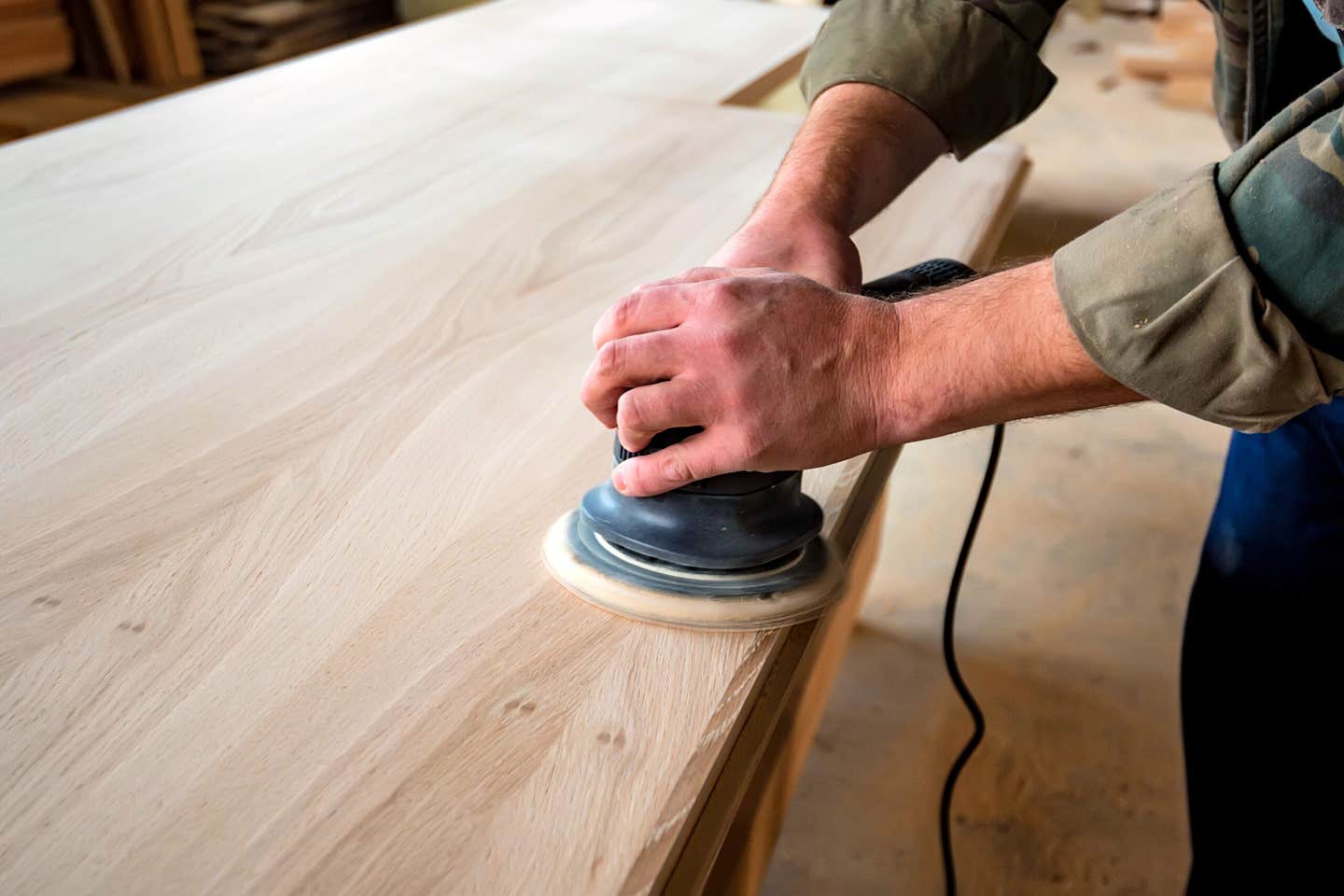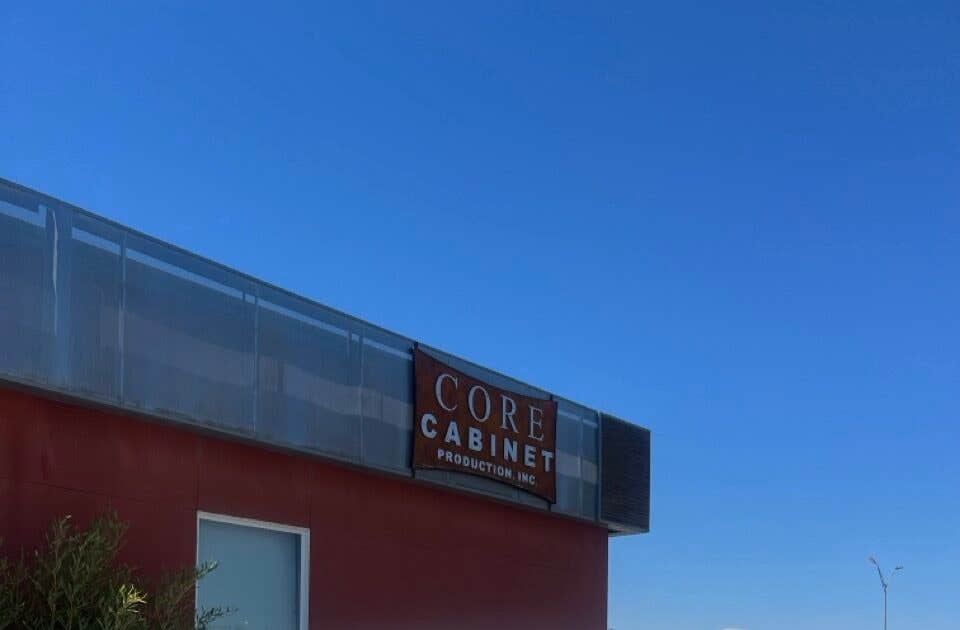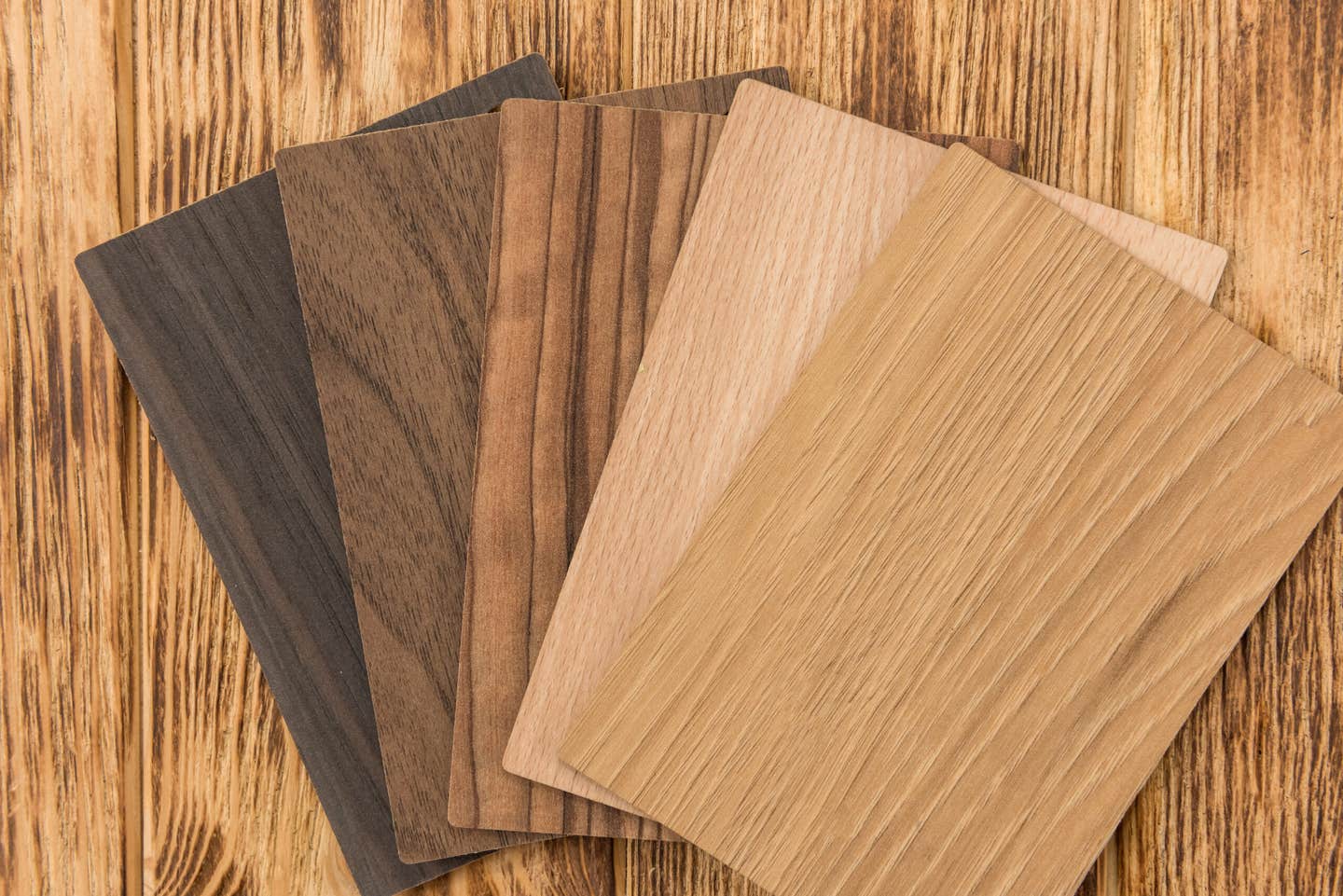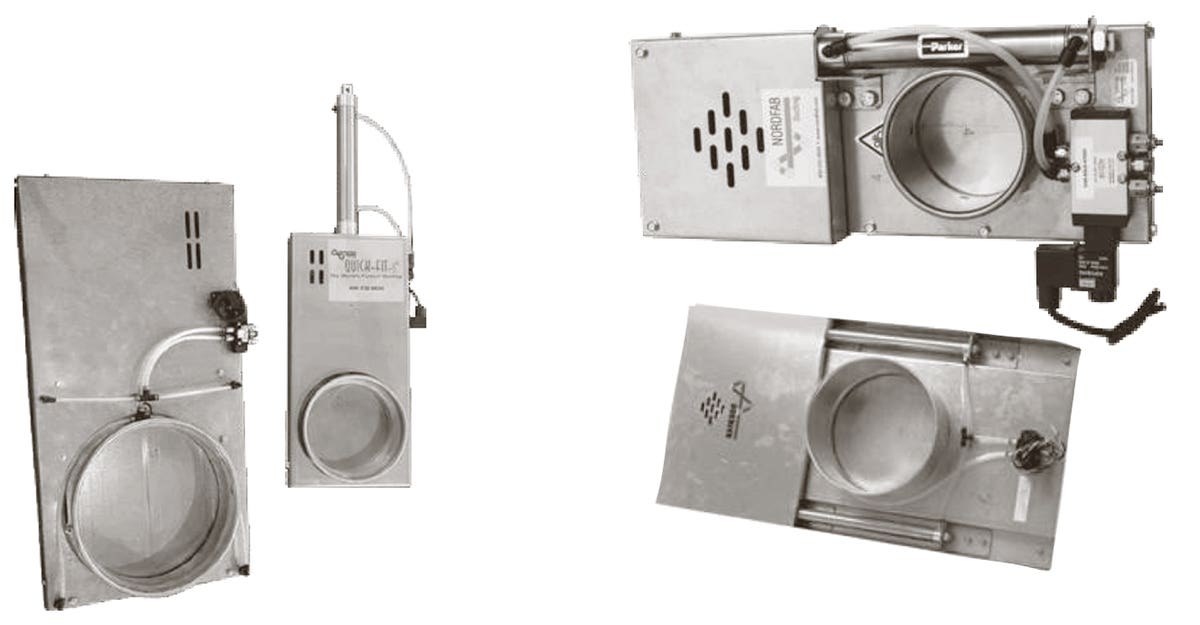The Changing Face of Cabinet Building
An update on current manufacturing trends, new accessories, consumer preferences, and more.
Cabinetmaking once was more of an artform more than a craft. The revered names we associate with box building such as André-Charles Boulle, Thomas Sheraton or Alexandre Roux were all creators of one-off pieces of art furniture. It wasn’t until the early 20th century that fitted kitchens became commonplace, and a new trade was born.
A century later, cabinet shops are now seeing another revolution. Today, the highest level of skill is no longer in hands-on arts such as hand carving or inlay work, but rather in technical crafts such as CAD design and robotics. We’re getting the same (and often better) results, but now we’re able to do it with fewer people on the shop floor. Of course, there’s not much choice: the industry has to automate because of a dearth of employees with those valuable hands-on skills. A CNC makes quick work of engraving, veneering, inlays, carving or other unique enhancements that once allowed casework pieces to stand alone. The revolution in technology is making fine cabinetry more affordable and accessible.
Communication is playing a role, too. Whether in the design or construction phase, what goes into each cabinet is changing. The internet allows us to be a lot more aware of changing tastes in the market, and technology lets us respond quickly.
Trends in cabinetmaking
The latest design preference in cabinets is toward darker shades – intense grays and even black are becoming popular, but dark greens and blues are also finding fans. Designers then use warm accents to offset the cooler colors on these painted or foil doors. The complementary accent colors are rooted in vibrant yellows or rich burgundies – the tones found in wine, fresh vegetables, breads and fruits. There are some nice examples on the Living Etc. website at livingetc.com.
There’s also a growing movement toward using starkly contrasting colors that can give a room some ‘kick’. This two-tone drama is most often accomplished with paint but can also be a function of juxta-positioning different materials such as plastic laminates, melamine, painted surfaces and even foils. Several plastic laminate manufacturers are now offering textured surfaces. The tactile properties of these materials can augment the contrast provided by color alone.
Perhaps being able to ‘feel’ the grain reminds customers of wood. But while the new generation of cabinets may have become less decorative, they are also becoming far more functional. Part of that is a trend away from standard industry dimensions. Counter heights and depths that were set in stone for decades are giving way to more practical, ergonomic and custom solutions that reflect changes in lifestyles. More people are growing old in their own homes, kids are staying home longer, and the make-up of the modern family sometimes doesn’t quite fit the way things have ‘always’ been. For example, older people often have access challenges that are being increasingly addressed by hardware, such as wall cabinet doors that swing up and away to provide better sight lines and more reachable interiors. Pulls are easier to grab than small round knobs. Lower sinks offer better access to older, shorter people.
The look and style of some kitchens is becoming regressive too, where pieces of free-standing furniture are once again the focus they were before the ubiquitous fitted cabinet arrived. We never totally abandoned the curves and quirks of French provincial or Tuscany, and now their influence is returning. In true farmhouse tradition, the kitchen is once more being used for conversation and togetherness, as much as mere utility. Families are not just cooking together more, they’re also staying in the kitchen to eat. Part of that has to do with charging stations and other modern conveniences, such as being able to watch the news on a phone at the counter rather than having to sit in front of a living room television. And some of it has to do with the relaxing vibe that comes from planned informality and muted color schemes. Islands are changing too, and often replacing the kitchen table. Room is being allowed under their counters for knees and chairs, and better overhead lighting is being used to draw us in.
The concept of open-plan living is also seeing regrowth, where the walls between kitchens and other living spaces are being removed, or at least opened up to new sightlines by creating openings such as pass-throughs and extra doorways. Open shelving is hot right now, and bracket-free floating shelves are a popular accent. Flooring and wall themes are being carried from one room through to the next, thanks in large part to the emergence of better laminate floor options that can tie the home together. The visual connectivity provided by a common floor often invites cabinetry to migrate from the kitchen into adjacent spaces, too. And the warmth of wood floors can compensate for cooler colors on cabinets.
The friendly farmhouse isn’t the only trend affecting our industry. A by-product of more open spaces is an innate urge to hide clutter behind the clean look of frameless cabinets. That continues to be especially popular with people on the go. While multi-generational families who are living together lean toward warmth and familiarity, busy singles and working couples are constantly seeking new ways to neutralize their kitchens and hide any evidence of chaos. Pull-out storage solutions are wildly popular in more urban, trendy markets. Indeed, anything that removes items from the countertop and stores them out of sight is hot, including appliances that are completely hidden behind faux cabinet doors. And given the way the world is changing, some buyers are also beginning to ask about using institutional antibacterial surfaces in residences. The take on social media seems to be that the current epidemic may just be the first of many.
Form meets function
Among the things that go into cabinets are outsourced accessories that can transform a box into something with a very specific function. New in this area from Rev-A-Shelf (rev-a-shelf.com) is the 445-VBOSC-8C. This is a grooming organizer for bathroom vanity cabinets that stores devices such as curling irons and blow dryers, and also includes outlets to power them. Cabinetmakers who are adding electric power in bathrooms may want to check with their local electrical inspector to see if this requires a licensed electrician. This device from Rev-A-Shelf is typical of new designs in this area. It’s actually door mountable, and it gives up a little storage space so that everything is easy to access. Options are available for a variety of cabinet sizes, and shops can usually search for such products by width and door style (frameless or face frame). The same company has a new line of natural maple pullouts that are designed specifically for kitchen cookware storage and organization (the 4CW2 Series). These have pegboard bottoms that allow a cook to move pins around and create different storage patterns.
Deco Bros (decobros.us) offers some economical ways to enhance a cabinet such as a K-cup storage drawer (for the little plastic cups used by countertop coffee machines), a frying pan rack, a pot lid rack, and even a food can organizer. Most of their products are available for $15 to $30, and they can add a nice custom accent to a client’s kitchen.
Another organization with a budget-minded line is YouCopia (youcopia.com). Its catalog includes a huge variety of low-priced accessories for kitchen and bath cabinets, including a plastic liner for under $20 that turns a drawer into a spice cabinet. YouCopia is perhaps best known for its line of Crazy Susan small turntables that can help make good use of awkward corner spaces.
Rok Hardware & Cabinets (rokhardware.com) carries a selection of well-known brands and also features some products that bear its own brand. Among them are hardwood sliding shelves, a neat little basket that slips past the plumbing in small sink bases, and hefty base cabinet organizers that have a lot of built-in adjustability.
The Japanese manufacturer Yamazaki (theyamazakihome.com) offers a couple of aftermarket shelf organizers that woodshops might consider carrying as an accessory. They allow homeowners to make better use of cabinets where dishes are stored and get cooks past that annoying problem of having small plates stacked upon larger ones.
Pulls and knobs
As cabinets grow more streamlined and colors more somber, one bright spot in the design process is the visible hardware. Often designed to blend in so they don’t detract from the natural beauty of wood, handles and hinges have come into their own with the emergence of painted doors and drawer fronts. They now pop with statements in stylish new colors such as Honey Bronze from Top Knobs, or Aurum Brushed Gold from Richelieu. Belwith Keeler is also offering a color in this range, which it calls Brushed Golden Brass.
One of the most effective ways to establish a unique look for a kitchen or bathroom is by making these bold choices in hardware. And among the more adventurous new selections is one from Soko Decorative Hardware, which is made in San Francisco by Jaye Design LLC (jayedsgn.com). Perhaps best known for her quirky Manhandle line of pulls (they’re like stick drawings of people), designer Cari Jaye Sokoloff has just released her Motif collection. It features organic twists and turns in two materials (hand cast bronze and hand cast stainless steel), and in ten metallic patina finishes that are anything but smooth. They range from reddish brown through eggplant, tarnished, wrought, lustrous and soft sheens.
Door styles
Everywhere one looks, the latest cabinet door styles are harkening back to simpler times. Shaker doors have never been so popular. The stark flat panel and undecorated stiles and rails seem to appeal to our need for simplicity in a complicated world.
The Spruce website (thespruce.com) ran a piece this April by architectural writer Kristin Hohenadel on currently popular cabinet styles. Leading her list? Shaker. Hohenadel notes that “painted white Shaker-style cabinets and a farmhouse sink seems to tap into some kind of deep nostalgia for a romanticized agrarian past.” She also says that “if white cabinets aren’t your thing, try navy, forest green or matte black paint.” These two standards seem to be defining kitchen in 2020 – simple doors in simple colors.
Fabuwood has just opened a huge manufacturing facility on the south bank of the Passaic River in Newark, N.J., near its confluence with the Hudson. The company (online at fabuwood.com) has introduced two new door styles named Metro and Discovery that are prime examples of the current desire for simplicity. Fabuwood describes Discovery as “an economical Shaker-style cabinet designed with traditional overlay doors and a five-piece drawer front.” It comes in a frost (white) finish. And the Metro door carries the same description but is available in frost, mist (gray) and a natural stain called Java.
Ikea has just added a new Sektion brand cabinet (item SE SBP) to its line that also sports a simple five-part, light gray colored door. The door stiles and rails are the same width all round, and they have a beveled interior edge. This is a 30” wide base cabinet that the company says can be used for either mounting a sink or installing a recycling bin.
What’s unusual is that the door is, in fact, a drawer front. The front and floor of the cabinet ride as a single unit on full extension dampened glides. The company offers this cabinet with the same features in different finishes, such as Kungsbacka anthracite (black), which ties into the design trend toward darker shades that was mentioned earlier.
A greener future
So, what’s the next big trend in cabinets? Well, woodshop owners might want to consider ecology. In keeping with almost every other aspect of home construction, cabinetmakers’ carbon footprints are becoming more and more interesting to increasingly concerned and aware consumers. Shops that offer carbon-neutral kitchen manufacturing are already leading the way in European markets such as Germany and the U.K., and North American consumers are beginning to board that train of thought. For decades, U.S. manufacturers have touted green standards and the market is finally beginning to show significant interest.
If your woodshop isn’t already using formaldehyde free (or no-added-formaldehyde) products, here’s some food for thought. Indoor pollution has always been a topic for conversation, but now with people restricted to their homes it has gained a lot of momentum lately. Consumers are searching for informed guidance, and the National Green Building Standard is one of the first websites they find, in part because it’s the only green building rating system that’s approved by the American National Standards Institute. The NGBS provides a blueprint for builders to follow for the design and construction of new and renovated single-family homes, and also multifamily apartment buildings. When constructing an NGBS Green home, builders must select products, including those used in casework and countertops, that produce fewer indoor pollutants.
Among the recommended materials for new casework are formaldehyde-free sheet goods such as soy, grass, rice stalk or straw-based MDF and hardwood plywood cores. Rice is especially promising because the internal and natural mold resistance of rice fibers is very high. That means there is no need to use formaldehyde-based adhesive. MDF that is sold as having no added formaldehyde (for example those using binders such as PMDI) will only have the naturally occurring emissions from the wood itself.
The evolution of cabinetry over the past decade has seen a switch away from natural wood (but wait a while, it’ll be back!), fancier and more colorful hardware, environmentally improved sheet stock, low maintenance and antibacterial finishes, smarter storage solutions and more eat-in kitchens. Shops have seen new a whole new generation of construction machinery that includes everything from 5-axis milling to robotic loading and unloading. Businesses have developed new philosophies that have borrowed heavily from lean manufacturing while trying to respond quickly to both globalization and faster trends driven by social media. The industry is perhaps better equipped than most to recover quickly from the global pandemic, but woodshop owners are keenly aware that the impact on the global and national economies has been brutal, and the shock waves from trillions of dollars in new debt are only just emerging. How it will affect interest rates, new construction and the labor force is anyone’s guess, but for now IWF Atlanta is still on schedule.
This article originally appeared in the July 2020 issue.



